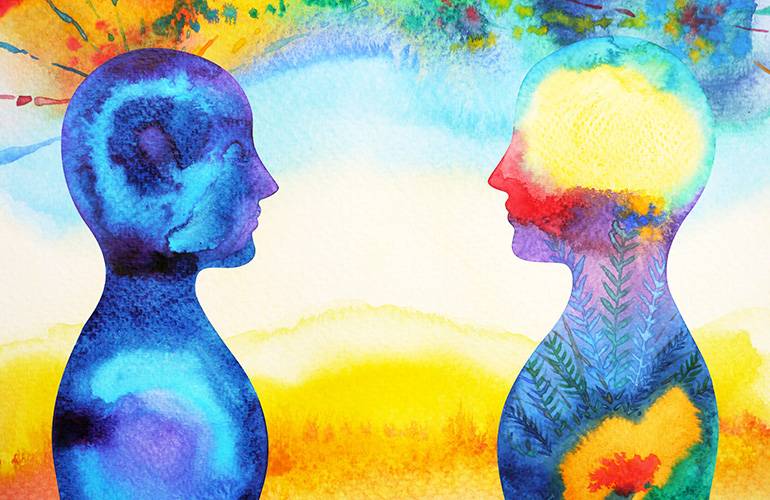Introduction:
Art therapy is a unique and effective approach that utilises the creative process to improve mental health and emotional well-being. It combines psychotherapy and artistic expression, creating a safe space for individuals to explore and communicate their thoughts, feelings, and experiences through various art forms. This therapeutic technique has gained popularity over the years as research continues to highlight its positive impact on individuals facing a wide range of mental health challenges. In this article, we will delve into the principles, benefits, and applications of art therapy, exploring how this creative intervention has emerged as a powerful tool for promoting mental health.
The Principles of Art Therapy
At the heart of art therapy is the belief that artistic expression can serve as a powerful medium for communication and self-discovery. Art therapists are trained professionals who guide individuals through the creative process, encouraging them to explore their emotions, experiences, and subconscious thoughts. Unlike traditional talk therapy, art therapy allows individuals to express themselves visually, bypassing the limitations of verbal language and tapping into their innate creativity.
The creative process in art therapy is considered inherently therapeutic. Engaging in artistic activities stimulates the brain, releasing endorphins and promoting relaxation. Art provides an outlet for emotions that may be difficult to express verbally, allowing individuals to gain insight into their own psyche and develop new perspectives on their challenges.
Benefits of Art Therapy
Emotional Expression: Many individuals find it challenging to put their feelings into words. Art therapy provides a safe space for them to communicate their emotions, reducing the fear of judgement or misunderstanding.
Stress Reduction: Engaging in artistic activities can be meditative and calming, promoting stress relief and relaxation.
Self-Discovery: The art-making process often leads to self-reflection, helping individuals gain a deeper understanding of themselves and their inner experiences.
Empowerment: As individuals see their artistic skills improve, they gain a sense of accomplishment and increased self-confidence, fostering a positive self-image.
Processing Trauma: Art therapy can aid in processing traumatic experiences by allowing individuals to externalise and explore their feelings, gradually helping them come to terms with their past.
Communication Improvement: For individuals who struggle with verbal communication, art therapy can provide an alternative way to express themselves and interact with others.
Resolving Conflicts: The creative process can help identify and address conflicts within oneself or in relationships, leading to personal growth and healthier connections.
Applications of Art Therapy
Mental Health Disorders: Art therapy has been used as a complementary treatment for various mental health disorders, such as depression, anxiety, PTSD, and eating disorders.
Autism Spectrum Disorder: Art therapy is often employed to help individuals on the autism spectrum improve social skills, enhance emotional expression, and reduce anxiety.
Substance Abuse Recovery: Art therapy can aid individuals in addiction recovery by providing a non-verbal outlet for emotional expression and coping with stressors.
Chronic Illness: People dealing with chronic illnesses often experience emotional distress. Art therapy can be a supportive tool for coping with the challenges of their conditions.
Children and Adolescents: Art therapy is especially beneficial for young individuals who may not have fully developed verbal skills. It helps children process their emotions and experiences in a developmentally appropriate manner.
Geriatric Care: Elderly individuals facing cognitive decline or emotional struggles can benefit from art therapy, enhancing their quality of life and fostering social connections.
To effectively implement art therapy, it is essential to work with a trained and certified art therapist who understands the principles of psychology, art, and the therapeutic process. The art therapist establishes a safe and supportive environment, free from judgement and criticism, where clients can freely express themselves through art.
The process begins with an initial assessment, during which the art therapist collaborates with the client to identify their goals and concerns. This assessment helps the therapist tailor the art interventions to meet the individual's specific needs and preferences. Art therapy can involve a wide array of artistic mediums, such as drawing, painting, sculpture, collage, and even digital art, depending on the client's comfort and interests.
Throughout the therapy sessions, the art therapist encourages clients to explore their creativity, experiment with different materials, and delve into their emotions and thoughts. The therapist may prompt discussions about the art pieces created, allowing the client to gain insights into the underlying feelings and meanings embedded in their artwork.
Art Therapy in Practise: Case Studies
Sarah, a 32-year-old woman, struggled with chronic anxiety, which had a profound impact on her daily life. Traditional talk therapy had provided some relief, but she found it challenging to articulate the depth of her emotions. In art therapy, Sarah discovered a safe haven where she could express her anxiety through abstract paintings. The vibrant colours and chaotic lines reflected the turbulence within her. Over time, as Sarah explored her artwork with her therapist, she began to identify triggers and coping strategies for her anxiety. Art therapy empowered her to confront her fears and build resilience.
David, a 14-year-old boy, had been diagnosed with ADHD and faced difficulties in school due to impulsive behaviour and academic challenges. His art therapist introduced him to sculpting with clay as a way to focus his energy and emotions. David's creations evolved from simple shapes to intricate figures that represented aspects of his life.
Through his sculptures, he shared his frustrations and dreams, allowing the therapist to understand him better. Over several sessions, David's art evolved alongside his emotional growth. He learned to channel his energy positively, and his school performance gradually improved.
Ethical Considerations in Art Therapy
While art therapy can be an enriching experience, it is essential to consider ethical considerations when engaging in this practise.
Confidentiality is a fundamental principle, ensuring that clients feel safe sharing their deepest emotions and experiences. Art therapists must also be mindful of the potential triggers that art-making can bring and be prepared to address any emotional distress that may arise during the sessions.
Moreover, it is crucial for art therapists to maintain a professional boundary, ensuring that the focus remains on the client's well-being rather than the aesthetic value of the art. The therapeutic process is about the client's journey of self-discovery and healing, not about producing a masterpiece.
The Future of Art Therapy
As the field of mental health continues to evolve, art therapy stands poised to play a more significant role in comprehensive treatment approaches. With ongoing research, we gain a deeper understanding of the mechanisms through which artistic expression affects the brain and emotions. This knowledge can lead to more targeted and effective art-based interventions for specific mental health conditions.
Additionally, advancements in technology open up new possibilities for digital art therapy and online platforms that can extend the benefits of art therapy to a wider audience. Virtual art therapy sessions have the potential to reach individuals in remote areas or those with physical limitations, offering them access to this valuable form of therapy.
Conclusion
Art therapy is an innovative and powerful approach that taps into the innate creativity within each individual, offering a unique pathway to emotional healing and growth. The combination of artistic expression and psychological insight empowers individuals to explore and communicate their emotions, leading to increased self-awareness and improved mental health. As research continues to illuminate the benefits of art therapy, its integration into standard mental health treatment approaches will likely expand, providing hope and healing to countless individuals struggling with mental health challenges. Ultimately, art therapy exemplifies the transformative potential of creativity in promoting well-being and enriching lives.


